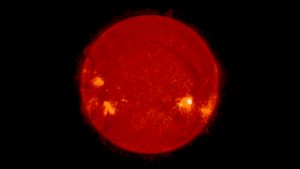Video explaining the discovery of benzonitrile in interstellar space.
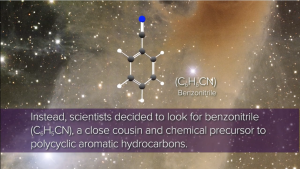
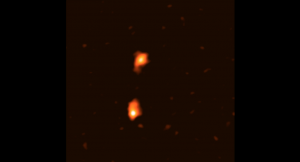
Merging galaxies in the early universe captured with ALMA.
Animation zoom-in of the composite image of ADFS-27 galaxy pair. The initial image is from ESA’s Herschel Space Observatory. The object was then detected by ESO’s Atacama Pathfinder EXperiment (APEX) telescope. ALMA (final zoom) was able to identify two galaxies: ADFS-27N (for North) and ADFS-27S (for South). The starbursting galaxies are about 12.8 billion light-years from Earth and destined to merge into a single, massive galaxy.
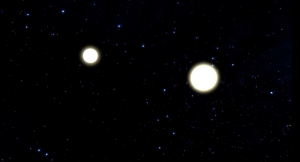
Animation of Neutron Star Merger and Aftermath
Animation of the merger of two neutron stars. As the two bodies draw closer together, they circle each other hundreds of times each second until they eventually collide, producing a tremendous explosion and an expanding shell of debris. This detonation also produces gravitational waves, which travel outward at the speed of light.
The collision also may create a black hole at the center.
Following the explosion, high-power jets of particles traveling nearly the speed of light quickly encounter the expanding debris, forming a cocoon of high velocity material, and then travel into interstellar space where they excite the dust and gas between the stars, producing an enduring radio “glow” that astronomers can study from Earth.
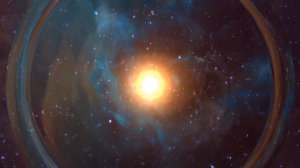
Radio Waves: Unlocking Secrets of Neutron-Star Collision
NRAO astronomer Dale Frail talks about recent VLA observations of a gravitational wave event.
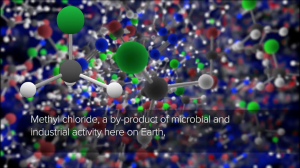
Methyl Chloride Discovered in Two Different Places
Organohalogen methyl chloride discovered by ALMA around the infant stars in IRAS 16293-2422. These same organic compounds were discovered in the thin atmosphere surrounding 67P/C-G by the Rosetta space probe.






